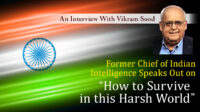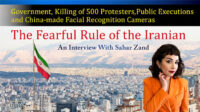Fukushima was not as serious as Chernobyl or Hiroshima
--Interview with Professor Jun Takada, February 7th 2012
The Japanese government needs to stop impeding research in the 20 kilometer evacuation zone
 Next I would like to talk about the 20 kilometer evacuation zone. In April 2011, before access was denied to this zone, I went there with a personal dosimeter and researched radiation levels. At the time I did not find radiation levels high enough to affect human health. But in order to give information concerning agriculture, and the rehabilitation of people’s livelihoods, I needed to gather more data.
Next I would like to talk about the 20 kilometer evacuation zone. In April 2011, before access was denied to this zone, I went there with a personal dosimeter and researched radiation levels. At the time I did not find radiation levels high enough to affect human health. But in order to give information concerning agriculture, and the rehabilitation of people’s livelihoods, I needed to gather more data.
The government should have urged scientists including university professors to conduct studies and help the region recover, but instead they restricted access to the region, making it difficult to conduct research. After this, the 20 kilometer evacuation zone turned into a black box. What we need to focus on in 2012 is to help this area recover. To achieve this, the government needs to smarten up and allow scientists to conduct research within this zone. Information must not be restricted to data gathered by the government. We have a lot of scientific muscle in Japan that should not go to waste.
This year in February I was able to go back to the 20 kilometer zone to conduct more research. I went to Namie, a town with large agricultural areas, and conducted research with the help of local cattle farmers. For now, I have measured the radiation in cows’ bodies but in future, I also want to make it possible for farmers in this area to sell their goods to other areas again. Starting with cattle farmers, I want to give people in the disaster area hope and help them tear down the wall between them and the rest of the world so they can recover from the shock.
In 2011, the 20 kilometer zone became a black box. For 2012, it is our task to break down the wall and make this area transparent again. This is the only way we can discover concrete ways to help the area recover. We should help people living in this zone discover and realize ways to help them out of their difficulties one by one.
The Japanese government is responsible to help the 20 kilometer zone recover. The people of Namie will gather for a petition, and the government needs to take their voice seriously. Having allowed no major studies, the government has made a major mistake. Instead of stopping specialists from taking action, the government should spur them on. The Democratic Administration has made many mistakes. This is their chance to steer things in a positive direction.
What happened at the Fukushima reactors and in the 20 kilometer radius around it does not even come close to the disasters of Hiroshima or Chernobyl. This is the first point I would like to make clear. I want to appeal especially to those living in the 20 kilometer radius and surrounding areas to do their best and speed up the recovery of their homeland. All Japanese scientists are behind you. Farmers of Namie, please believe in the recovery of your home.
I want everybody in Japan to know that what happened in Fukushima was fundamentally different from what happened in Hiroshima or Chernobyl. Hiroshima recovered, so there is absolutely no reason the 20 kilometer evacuation zone should not recover, too. In Hiroshima and Nagasaki, 200,000 people perished. “Black rain” fell that contained intense radiation. But these cities recovered quickly. I urge everybody in Japan to remember these historical facts and fully support the recovery of Fukushima Prefecture.
What I really want to get across to people outside Japan is that Fukushima was a completely different case from Chernobyl as there was no meltdown of the actual reactors. This information is based on scientific research conducted by specialists. The fuel rods melted down, and part of the pressure vessels, and the containment vessels were damaged (melt through), but the fact that these were there to prevent large amounts of radioactive material from escaping the facility. In Chernobyl on the other hand, the complete reactor melted down and was destroyed. The Kan administration’s reports given to the international community were unclear, and I feel it is important to get the truth across to everybody. Fukushima and Chernobyl were completely different events.
In July 2011, the results of radiation studies conducted in Fukushima were published in Japanese. This spring, the book will be published by Iryokagakusha in English as “Fukushima: Myth and Reality”. I encourage all English speaking readers to read this revealing book.


















